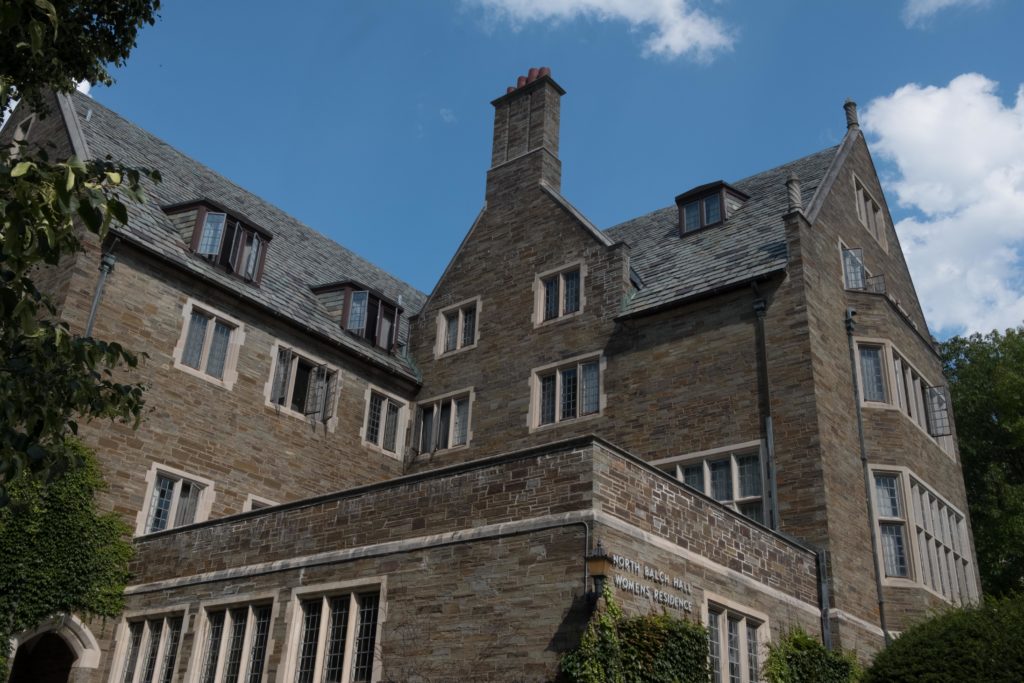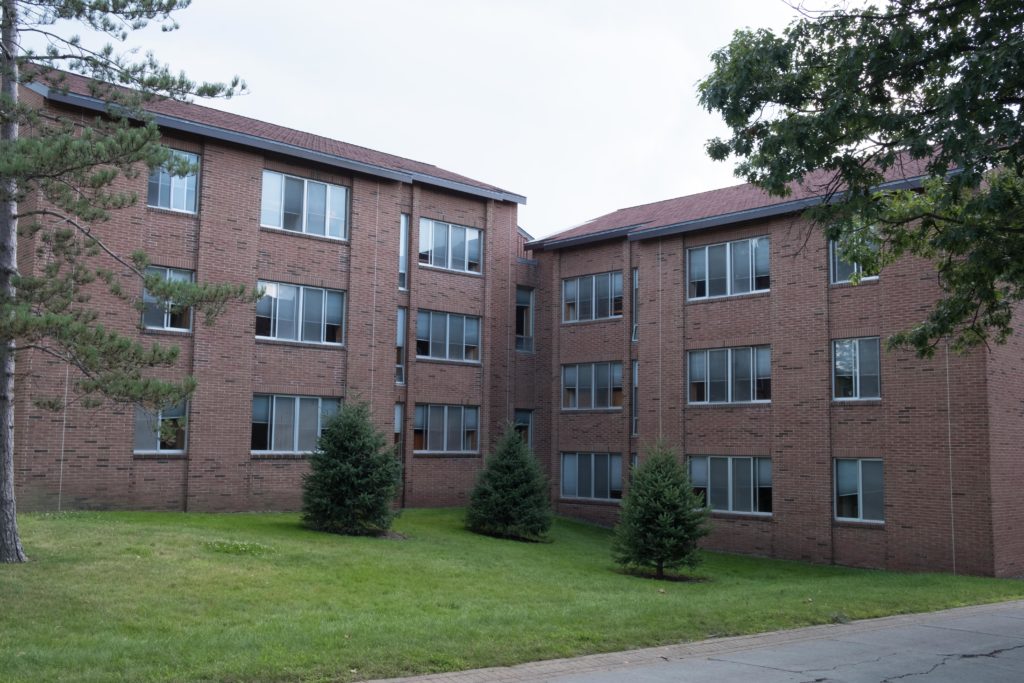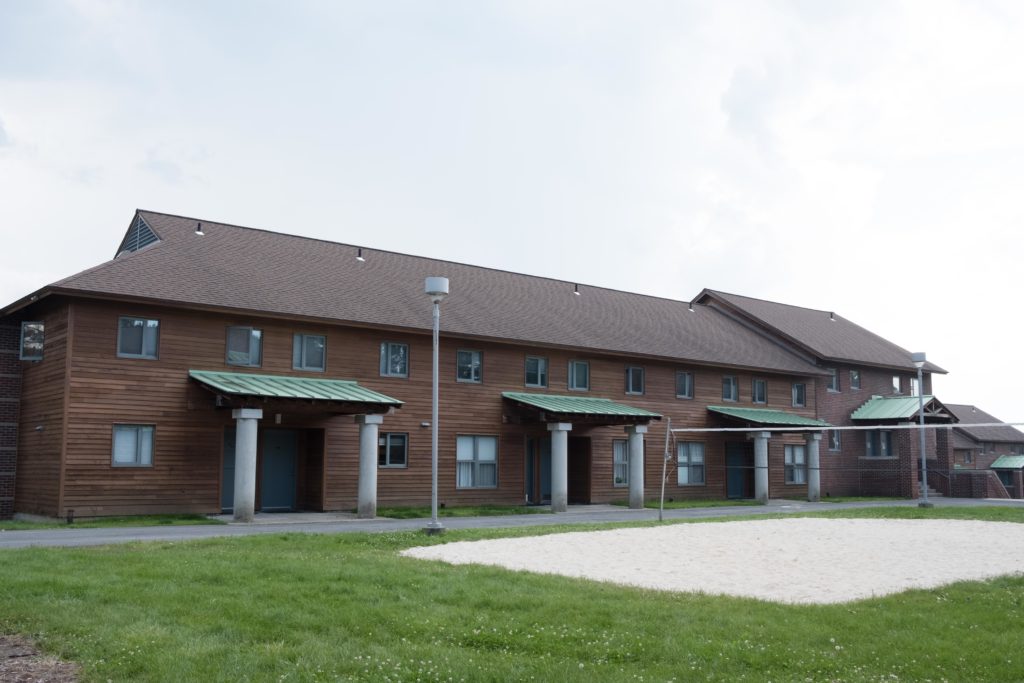North Campus Dorms Ready for Class of 2022
In the 1900s, the Cornell student body was housed entirely in fraternities and boarding houses — no real dormitories existed. According to Cornell: Glorious to View, a history of Cornell written by Profs. Carol Kammen and Walter LaFeber, history, Andrew Dickson White, Cornell’s founder and first president, believed students should live on their own. Clearly, times have changed. Now required to live on campus, the Class of 2022 arrives at Cornell with a plethora of housing options, ranging from traditional residence halls — described below — to more specialized program houses.
Balch Hall

Balch Hall, an all-women’s residence, was constructed in the 1920s as the second dormitory on North Campus, according to Cornell Then and Now by Prof. Ronald Ostman, communication.
Generations of Cornellians and architectural trends later, Balch’s Gothic style and ivy-covered exterior continue to exude a timeless and classically collegiate character.
“Balch is one of my favorites. The rooms are uniquely shaped, and the dormer windows are beautiful on the fifth and sixth floors,” said Karen Brown, director of marketing and communications for Campus Life.
The rooms in Balch are also the most spacious of all the North Campus dorms, according to former residential advisor Doug Weinberg ’08. Another big plus: Most rooms have a sink, either in the room itself or connected to an adjacent room.
Clara Dickson Hall

Named after A.D. White’s mother, Clara Dickson Hall has also held the unusual nickname, “The Big Dick,” according to Weinberg. The dormitory was originally intended to house only females, but is now is co-ed. Almost 500 students can fit in this five-story dormitory, the largest in the Ivy League, according to former residential advisor Mazdak Asgary ’08. Not quite so conveniently, however, Dickson has only four bathrooms per floor.
Dickson is also full of single rooms, a rarity for freshmen at most colleges. Many rooms stand on long hallways with lounges in the middle.
Court-Kay-Bauer Hall

Opened in 2001, this residence conveniently features the air conditioning other dormitories lack. While Ithaca does live up to its reputation of frigid winters, cool air is definitely welcome on those first few humid days of school. At its opening, this perk gave the dorm its nickname, “Court Resort.” As one of the most modern dormitories, Court-Kay-Bauer Hall also boasts brightly painted walls and comfortable common areas.
But all is fair, or pretty fair, in dormitory life, as the rooms in the Court-Kay-Bauer Community are also known to have walls that are almost paper thin, according to Weinberg.
Mews Hall

Along with Court-Kay-Bauer, Mews Hall represents the latest in dormitories on North Campus. According to Asgary, the structure and facilities of the building closely mirror that of Court-Kay-Bauer Hall. Mews also contains 22 lounges, including the spacious, semicircular Lund Lounge that overlooks Rawlings Green.
Traditional activities include a male talent show, ice skating, and a trip to the United Nations. Mews residents also enjoy convenient proximity to Appel Commons, one of two community centers on North Campus.
Mary Donlon Hall

Some say that Donlon Hall is “thong-shaped,” a description somewhat fitting considering its reputation for being a social dormitory.
“Donlon is uniquely situated because of the way the rooms go off into wings. Residents all have to go into the middle for social activity,” Brown said.
The majority of the rooms are doubles on co-ed corridors. While most bathrooms are single-sex, there is an occasional co-ed one.
Socializing may be a constant for life in Donlon, but the dormitory also has a recently-renovated library on the first floor. The library was repainted and recarpeted, according to Brown, and serves as a quiet and convenient retreat for some serious studying.
Low Rises 6 and 7

Step inside the Low Rises and you’ll feel like a rat in a maze. Winding corridors and unexpected turns are the norm in these dormitories. But at the time the buildings were constructed, the Low Rises’ small, somewhat isolated suites were a novel proposition.
“The emphasis on building small communities was considered to be a wonderful approach in residential living. The Low Rises were planned from the beginning to serve as an asset in our quest to foster diversity and interaction among and between our students,” Brown said.
Constructed at a time of high economic inflation, the Low Rises were built to be long-standing, according to Brown. A typical suite consists of one bathroom, two double rooms and two single rooms.
High Rise 5 and Jameson


In the midst of rural Ithaca, High Rise 5 and Jameson do their best to stir up a bit of urban life with their architectural styles intended to resemble city living. Their organization is very similar to that of the Low Rises, also with suites “designed to foster interactions within the community,” according to Brown.
The most distinctive feature of the High Rises is arguably their Sky Lounges. Located on the top floor of each building, they provide an unparalleled panoramic view of North Campus.
Townhouse Community

Living in the Townhouses is basically like sharing an apartment. Built in 1989, each has two double rooms and a bathroom — but also a sizable dining room and living room, not to mention a kitchen. While most agree the Townhouses are more secluded than the rest of the North Campus dormitories, their location also makes for a quieter, more private environment. Bus stops located right outside the community come in handy for avoiding the long walk to Central Campus. Despite being on the periphery of North Campus, Townhouse residents are still fully able to participate in all that college life entails.
“Residents have access to the Townhouse Community Center [and] also have easy access to Robert Purcell Community Center, just across the street,” Brown said.
